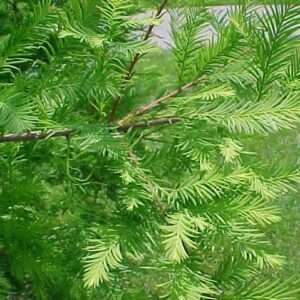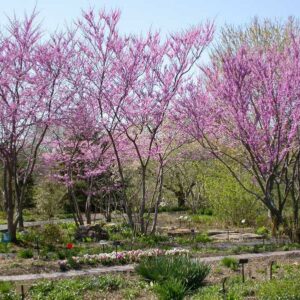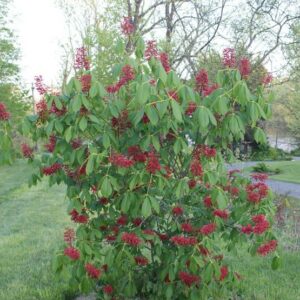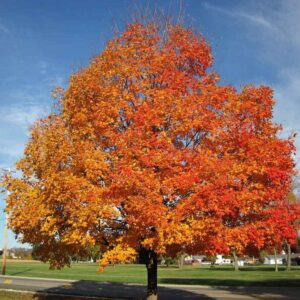Description
Culture
Best grown in humusy, rich, medium to wet soils in full sun to part shade. This tree needs a very large space within which to grow. In the wild, it grows in areas that are periodically flooded. It is difficult to transplant because of its deep taproot. Cross-pollination generally produces a more abundant crop of better quality nuts.
Noteworthy Characteristics
Carya laciniosa, commonly called shellbark hickory, is a large deciduous lowland tree that is native from New York to Iowa south to Tennessee and Oklahoma. It primarily occurs in the Ohio and upper Mississippi River valleys. In Missouri, it is most frequently found in low woods, bottomland, river flood plains and streambanks along the major streams and rivers in the state (Steyermark). It typically grows 60-80’ (infrequently to 120’) tall with a narrow rounded crown. Trunks mature to 3-4’ in diameter. This tree features odd-pinnate compound leaves, each leaf having 7 (less frequently 5 or 9) dark green, finely-toothed, broadly lance-shaped, pointed leaflets. Leaflets range from 4-8” long. Leaves turn yellow to golden brown in fall. Non-showy, monoecious greenish yellow flowers appear in April-May, the male flowers in pendulous catkins (to 4-8” long) and the female flowers in short spikes. Female flowers give way to edible egg-shaped nuts. Each nut is encased in a very thick husk which splits open in four sections when ripe in fall. Nuts are attractive to a variety of wildlife. Bark of young trees is gray and smooth, but exfoliates in long strips with age. This tree is very similar in appearance to shagbark hickory (see C. ovata), except shellbark has inter alia (1) leaves with 7 leaflets, (2) thicker husks on the nuts, (3) orange-brown twigs and (4) less pronounced bark exfoliation. This tree is sometimes also commonly called king nut hickory in reference to the fact that shellbark nuts are the largest in size of the hickories.
Genus name comes from the Greek word karya used for walnut trees.
Specific epithet means shredded in reference to the shaggy bark.
Problems
No serious insect or disease problems. Hickory bark beetle, pecan weevil and twig girdler can be problems in some areas of its range. Large trees can produce considerable litter through twig, leaf and fruit (nut) drop.





